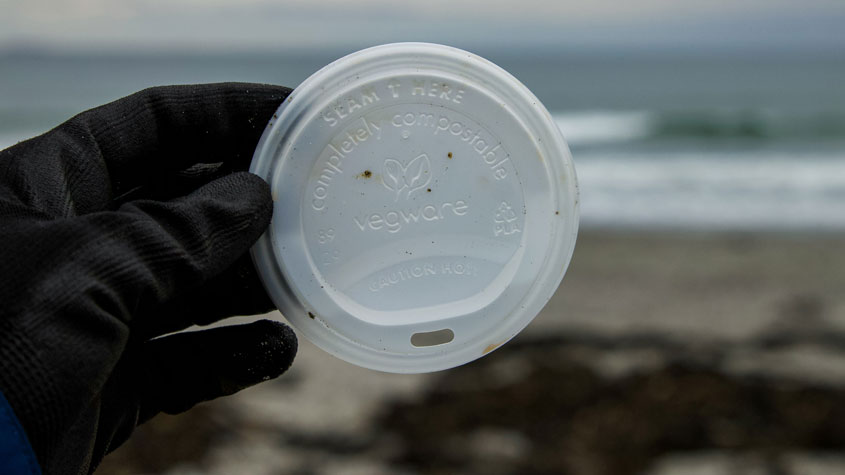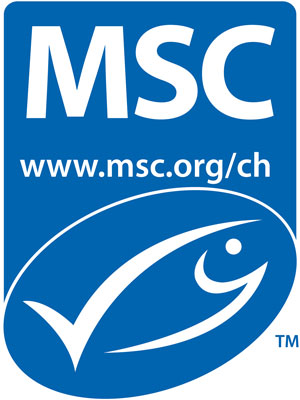December 2022
By Kathryn Park, Principal, Strategic Trademark Initiatives, Connecticut, USA
The last decade has seen a rapid increase in demand from consumers for “environmentally friendly” products and services. Climate change and its impacts ─ record-setting tsunamis and hurricanes, out-of-control wildfires, floods and landslides, droughts and scorching temperatures ─ are driving demand for goods that are sustainably produced and can be used without harming the environment.
One recent study by Dentsu International and Microsoft Advertising suggested that over 90 percent of consumers are interested in brands that are committed to and can demonstrate they are making sustainability a priority. It further noted that companies that fail to implement this as a strategy will face a consumer backlash in the next few years. Other studies show that well over 50 percent of millennials and Gen Z consumers will pay more now for such goods. Offering green goods can be very good for business.

With its potential to lure consumers, companies have embraced green marketing in many ways. These include adopting brand names that suggest green; using words like sustainable, compostable, green, organic, eco, zero impact and natural; featuring glossy shots of beautiful mountains, oceans and forests as backdrops in their advertising; use of green-based color schemes for advertising fonts and text; and making claims about the environmental benefits their products confer. But consumers are skeptical of such marketing unless the company can transparently demonstrate the factual basis for making such claims. Equally important, false or unsubstantiated green marketing claims can attract the attention of regulators, lawmakers and potential litigants, such as competitors, customers or consumer watchdogs.
First, companies that are successful green marketers typically embrace sustainability across their business operations. For example, they make explicit and measurable commitments to reduce their impact on the environment, which are publicly reported and capable of being verified externally. Transparency is key. The claims must be factually supported and meaningful or material to consumers.
Second, and hand in hand with the above, successful green marketers do not overstate their sustainability impacts. Companies that make specific claims about particular products are more likely to convince consumers that the claims are legitimate if they are not couched in overly broad terms, but carefully qualified and supported by sound data.
Offering green goods can be very good for business.
Third, successful green marketers avoid environmental claims that, while strictly true, are misleading. For example, claiming fewer emissions in one refinery while 99 percent of the business continues to release pollutants into the environment is such a miniscule benefit that it does not materially change the negative environmental impact of the refinery’s business.
Customers are loyal to brands that have a proven track record of living up to their environmental commitments. For example, the women’s clothing brand, Eileen Fisher®, has a dedicated consumer base, which is appreciative of the brand’s commitment to sustainability. And that is highly visible because the company takes back its used clothing and recycles it into new goods.
Guidelines promulgated by the Federal Trade Commission in the United States in the Green Guides and by the European Union in its directive on Unfair Commercial Practices, offer clear guidance on what constitutes misleading information. Under both regimes, using vague terms such as “sustainable,” “green,” “eco,” and the like, are not acceptable if false or misleading. Additionally, claims need to be supported by clear factual evidence and qualified so as not to overstate their benefits. Moreover, the environmental benefit claim must pertain directly to the product as manufactured or used.
While regulators pursue companies that run afoul of consumer protection laws, claims are also pursued by non-governmental entities. Competitors may also sue, as will consumers who are misled, often as part of a consumer class action.
In a recent case of first impression arising in Italy, a court upheld a competitor’s false advertising challenge based on greenwashing. It sustained an interim injunction prohibiting the defendant from continuing to make vague and unsubstantiated green claims. The plaintiff, Alcantara, which makes a micro-fiber used in automobiles, claimed that its competitor, Miko, was making false claims about the green nature of its micro-fiber. The court held that the claims were unverifiable and false, and ordered their immediate removal from all of Miko’s advertising and web uses. It also ordered Miko to publish the court’s decision on its company website for 60 days.

An example of the potential havoc a consumer class action can wreak is the case of Wesson, a maker of cooking oil. Consumers of Wesson’s cooking oil brought a putative class action over Wesson’s claims that the oil was 100 percent “natural,” when in fact the oil was made from genetically modified organisms (GMOs). The litigation, which lasted an astonishing eight years, eventually settled.
So what constitutes actionable greenwashing? An example is labeling something as compostable, such as a garbage bag that is destined for a landfill where it will not break down. Claiming that something is recyclable when the infrastructure supports only a fraction of the recycling that would be required to remove the environmental harm ─ think plastic water and soda bottles ─ may also constitute greenwashing. There have been a number of lawsuits in the United States in the past year against Coca-Cola, Blue Triton Brands (which manufactures Poland Spring, Deer Park and other water brands), and others, for making broad sustainability claims despite the fact the vast majority of their bottles end up in landfills and are not recycled. These lawsuits have been filed by various environmental advocacy groups like the Sierra Club.
Customers are loyal to brands that have a proven track record of living up to their environmental commitments.
One example of this trend is the lawsuit filed in August of 2021, by the environmental group Earth Island Institute against Blue Triton (Earth Island Inst. v Blue Triton Brands) arguing that its sustainability claims were in violation of a specific District of Columbia law, the Consumer Protection Procedures Act, which prohibits the use of deceptive trade practices. In response, the defendant Blue Triton, argued that its claims were aspirational and constituted puffery, and were thus not actionable. The case is still pending.
And while companies may sometimes technically get away with these sorts of claims, consumers are wary. As demand for truly green products grows, casting a green sheen on products that aren’t truly better for the environment is bound to backfire.
In January of 2021, the European Commission, working with national consumer authorities, published a report on its annual sweep of consumer websites, which were scanned for breaches of EU consumer protection laws. The study, for the first time, focused on greenwashing and looked at green claims from a variety of consumer products. It concluded that in 42 percent of the websites examined, claims were likely false and deceptive and might well constitute actionable claims for unfair commercial practices.
Beyond the threat of enforcement actions or litigation, which is costly, loss of business looms as an even more significant long-term cost. Customers are balking when greenwashing is blatant. A quick review of YouTube, for example, reveals content created by millennials or Gen Z consumers warning of the worst green washers, and poking fun at many well-known brands. This sort of notoriety is bad for brands, potentially undoing decades of goodwill by turning off the next generation of consumers who are willing to spend more money for brands that deliver on their environmental commitments.
Trademark applications for goods and services that are related to the environment and to combatting climate change continue to grow. In September 2021, the European Union Intellectual Property Office (EUIPO) released its Green EU Trade Marks Report , which analyzed trademark filings by searching over 900 terms associated with environmental protection and sustainability, such as photovoltaic, solar, wind and recycling. It found the number of such trademarks has risen steadily, from under 1,600 in 1996, the first year the EUIPO was in operation, to almost 16,000 in 2020. Filings for such marks currently account for between 10 and 12 percent of all filings each year.
Trademark applications for marks that specifically include direct environmental claims, such as calling a product green, sustainable or eco-friendly, however, are likely to face a refusal. The basis for such refusals is most often because the mark is descriptive, but another potential basis for refusal is that the mark fails to function as a trademark. A third potential basis for refusal is that the mark is deceptive.
Creative marketers are adept at finding ways to identify trademarks that qualify for protection, and that are suggestive but not descriptive of the environmental benefit the brand promises.
As a descriptiveness refusal analyzes the words comprising the mark in relation to the goods delineated, it is straightforward. For example, the United States Patent and Trademark Office (USPTO) has refused registration for marks such as GREEN CEMENT for a cement that is not damaging to the environment, GREEN-KEY for environmentally friendly key cards, CARBON NEGATIVE FIBER for natural fibers used in composite materials for manufacturing, and ZERO WASTE TEE for clothing. In the EU, a similar analysis is used and indeed, terms like “eco” and “green” are specifically called out in the EUIPO Guidelines as being descriptive when used in connection with goods or services that purport to be environmentally friendly.
Use of unqualified green trademarks is likely to give rise to a claim of greenwashing, because of the inherent impossibility of adequately qualifying the claim in the few words that typically constitute a trademark. Because greenwashing occurs where the claim is not specific or qualified, by default, most trademarks will fail that test.
Creative marketers are adept at finding ways to identify trademarks that qualify for protection, and that are suggestive but not descriptive of the environmental benefit the brand promises. For example, the outdoor lifestyle-clothing brand Patagonia has registered trademarks such as BETTER THAN NEW® to identify consumer goods. Everlane, another clothing company, has been successful registering marks such as RECASHMERE® and REWOOL® for goods made of recycled textiles.

One proven way that companies can establish their green credentials is through use of a certification mark. Consumers increasingly rely on certification marks when making purchasing decisions. A certification mark is one owned by an entity that sets standards and testing methodologies that must be met by the companies seeking to use that mark. The Marine Stewardship Council (MSC), for example, has a certification program for fisheries that sets strict standards designed to lessen the negative impacts on the oceans of fishing. These standards are updated regularly as science evolves, and those seeking certification must establish that they meet those standards. The MSC certification mark is used directly on consumer facing products and by retailers and restaurants to signify that the seafood and fish that bear the mark have been harvested in accordance with these standards.
One proven way that companies can establish their green credentials is through use of a certification mark.
Another example is the Leadership in Energy and Environmental or LEED certification mark, used in the building and construction industry to indicate best practices in sustainable building. Considered the gold standard in certification programs, LEED certifications identify building projects that have positive material environmental improvements, such as lower water use, reductions in carbon emissions, and so on. And there are many others, such as BREAM (Building Research Environmental Assessment Method), which rates and certifies sustainability of buildings, the Rainforest Alliance certification for farms, Green Seal for consumer and commercial products, and SIP Certified for vineyards and wineries.
For brands that are looking for a way to quickly communicate a commitment to sustainability, a certification mark, used in conjunction with the brand, is often the best choice.